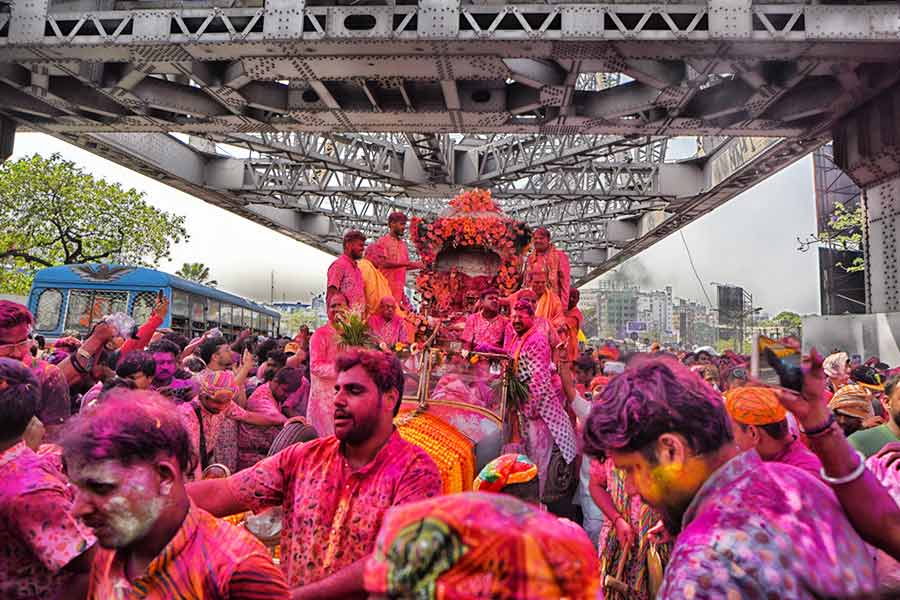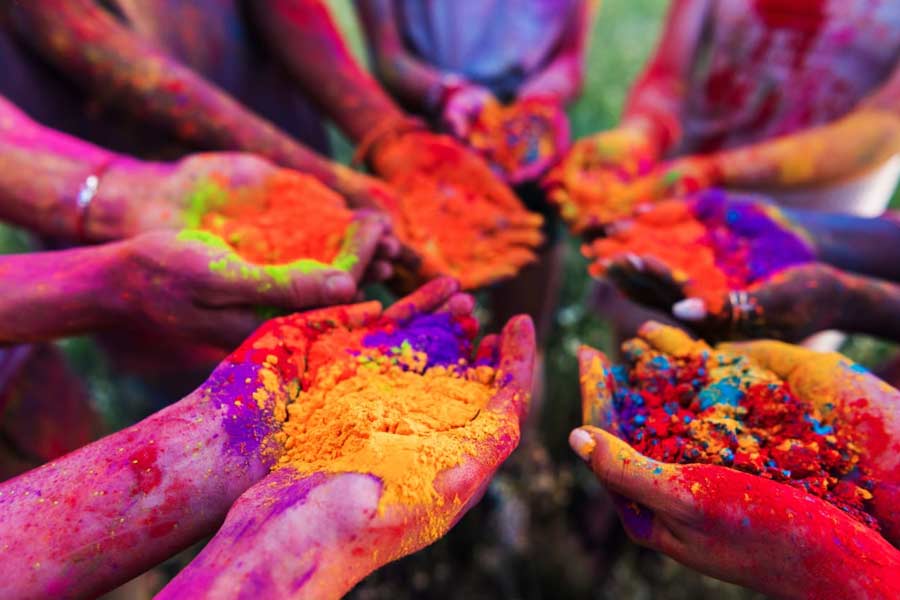As the festival of colours takes place, almost all of India is is drenched with water colours, gulal and abir. In West Bengal, we celebrate the festival as Dol Jatra, where Lord Krishna is worshipped. Basanta Utsav immediately brings Santiniketan to mind, but all parts of the state celebrate the festival with fervour. Nyarapora, or Holika Dahan, is observed on the night before. And not just West Bengal; different regions and states have different names and stories related to the festival. My Kolkata takes a brief look at some of them. Read on…
Rang Panchami, Maharashtra
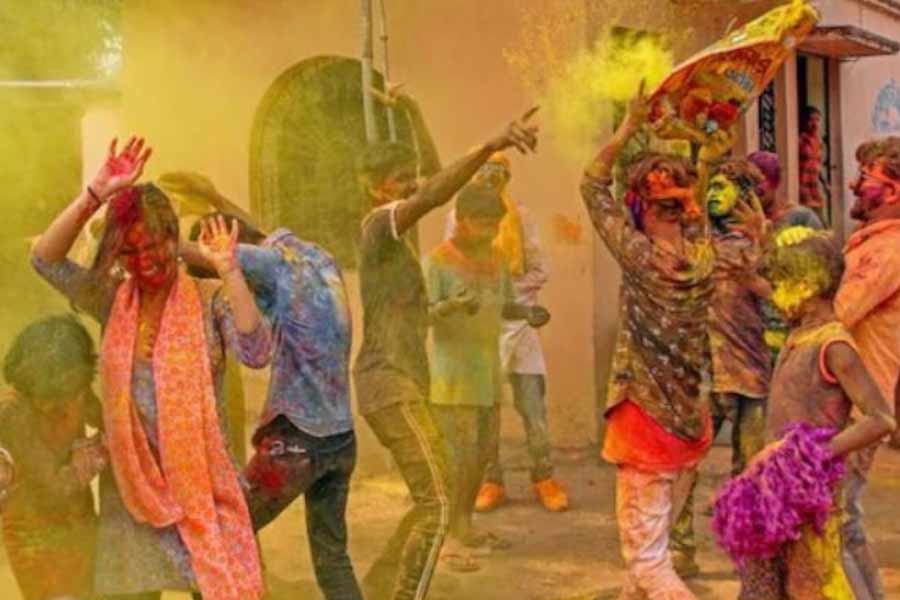
A Rang Panchami celebration in Maharashtra TT Archives
The word ‘Rang’ means colour and Panchami signifies the fifth day of the Hindu month’s calendar. Rang Panchami is usually celebrated five days following Holi. The festival originated in Maharashtra and is celebrated to mark the divine love of Radha and Krishna. In some places, people carry a small deity and immerse it in lakes or ponds nearby. It is believed that by worshipping Radha-Krishna, all wishes are granted and all difficulties of life are overcome. Some also refer to the story of Holika Dahan — the salvation of Prahlada from a bonfire lit by his aunt Holika. The festival is very important for the fishing community and is named Shigmo. A lot of dancing and singing programmes are also organised.
Another belief associated with the festival is that it helps in activating the five key elements (Panch Tattva), which supports the formation of the universe. These five key elements are wind, sky, earth, water, and light. As per the beliefs and mythology, the body of a human being is also made up of these Pancha Tattvas and the invoking of these elements brings balance to human life and its spiritual development.
Lathmar Holi, Uttar Pradesh
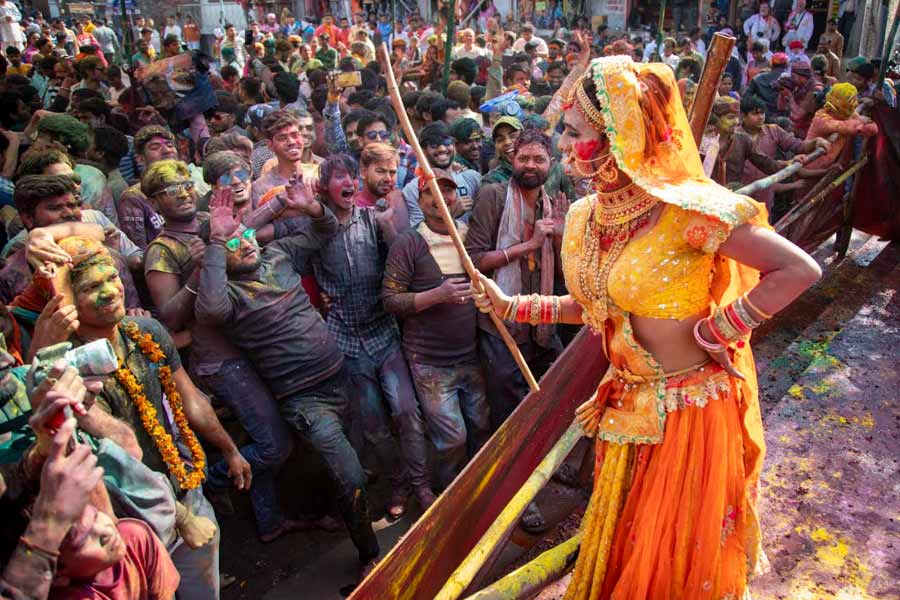
A woman playfully threatens revellers with a stick (lathi) during Lathmar Holi celebrations iStock
Lathmar Holi is celebrated in the twin towns of Barsana and Nandgaon in Uttar Pradesh, known to be the towns of Radha and Krishna. According to legend, Krishna, who resided in Nandgaon, wanted to sprinkle colours on his beloved Radha and her friends, who stayed in Barsana. Krishna and his friends were playfully greeted by Radha and her friends with sticks and they drove Krishna and his friends away. The tradition still continues. The men of Nandgaon visit Barsana where they are greeted with colours and sticks (lathi) by the women in good humour. It is usually celebrated for a week.
Hola Mohalla, Punjab
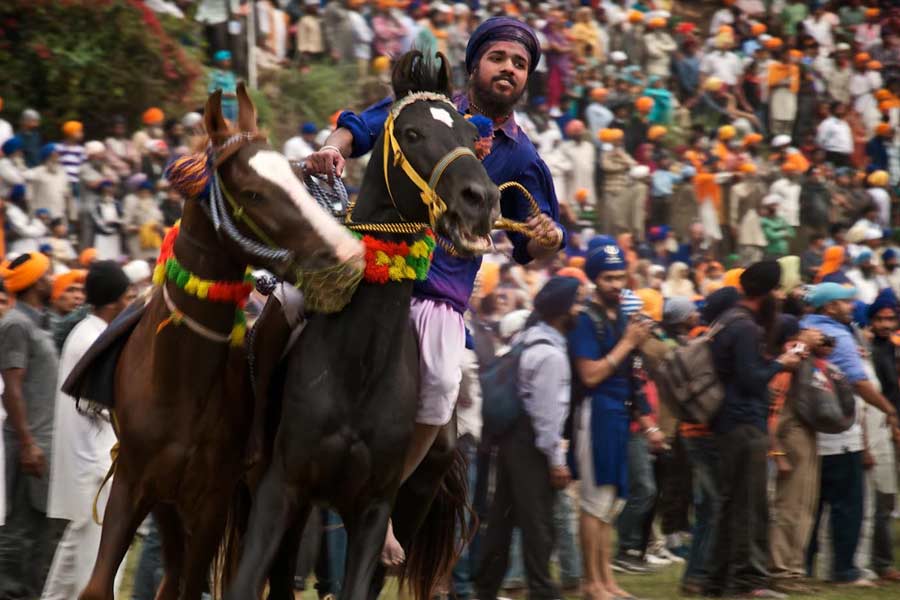
A Hola Mohalla fair at Anandpur Sahib, Punjab Wikimedia Commons
The three-day long festival celebrated by the Sikh community is called Hola. It takes place on the second day of the lunar month of Chet (first month of Punjabi calendar), which usually falls a day after Holi or sometimes coincides with it. A fair is held in Anandpur Sahib at the foothills of the Shivalik Hills in Punjab during Holi and Hola. The festivities come to an end on Holla Mohalla, with a long military-style procession. It is an occasion for the Sikhs to demonstrate their martial skills in simulated battles.
Holi is also considered to be a celebration to serve God. The colours of Holi manifests in God’s love. Sri Guru Gobind Singh (the tenth Sikh guru) built upon this method of celebrating Holi by adding a martial element and creating Hola Mohalla. According to some historians, Guru Gobind Singh built upon the story of Prahlad and founded the festival oh Hola Mohalla. Following tradition, gulal (red powder) is extensively used.
Royal Holi, Udaipur
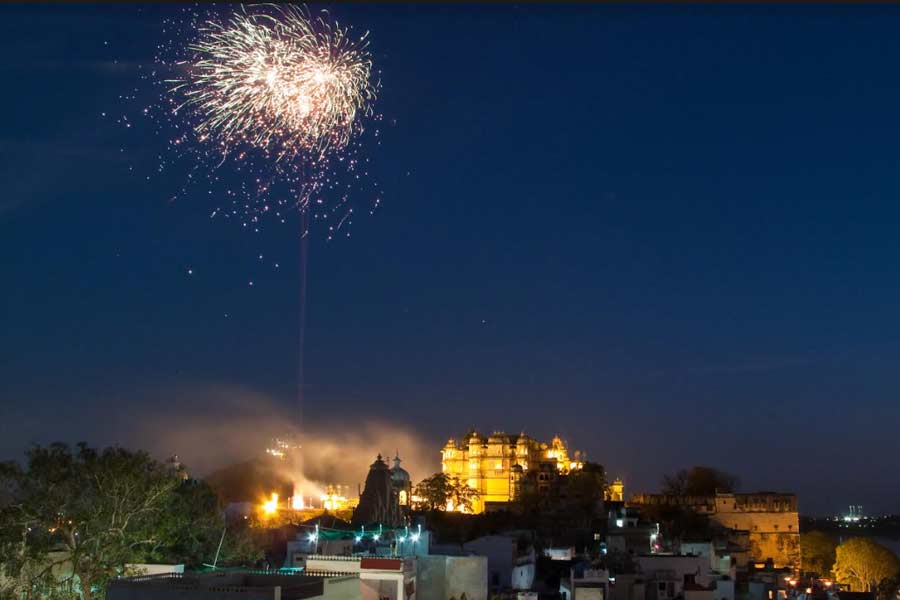
Fireworks over Udaipur on Holi iStock
Udaipur is known for its royals. The festival celebrated there have a lot of grandeur, especially at the royal palaces of the city. Holi, which is also called Dhulandi, is celebrated with fanfare and pomp. On the first day, Holika Dahan is celebrated where a fire is lit to discard evil. The bonfire is decorated with colours and rangoli. After the Holika Dahan, the descendants of the royal family take a round around the fire. A folk dance called Gair is performed by local people. Fireworks are arranged at night. After the bonfire, a rally of royals on elephants, camels and horses is also taken out. The next day, Holi is celebrated with gulal and water balloons. The gulal used is completely herbal — made from different flowers by the tribal women of the region. A fair is also organised in the Rajrajeshwar Shiv Mandir nearby on this occasion. There is also a matka mela, where earthen pots are sold by the potters of the region.
Kumaoni Holi, Uttarakhand
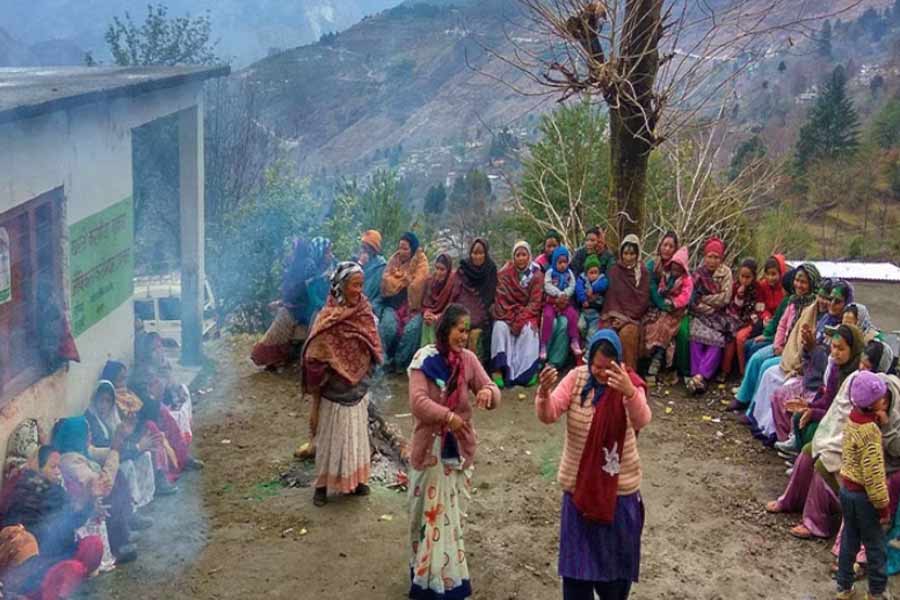
Kumaoni women celebrate Holi TT Archives
Kumaoni Holi is the perfect example of a historical and cultural amalgamation. The festival not only marks the victory of good over evil, but also the end to winter and the beginning of the new sowing season. The uniqueness of this festival is that it's a musical affair that starts from Vasant Panchami and continues for almost two months. It has different forms — like Baithaki Holi, Khadi Holi and Mahila Holi. Various songs related to Holi are sung during the festival. The Baithaki Holi is a musical gathering based on Hindustani Classical music starting on Vasant Panchami. It begins on the premises of mandirs where the holiyars (singers of Holi songs) gather and sing. Khadi Holi (standing Holi) starts almost at the same time like Baithaki Holi, but is celebrated mostly in the rural areas of Kumaon. People dance to the tunes of local instruments like dhol, joda and hurka. Mahila Holi is similar to Baithaki Holi and is celebrated only by women.
Manjal Kuli, Kerala
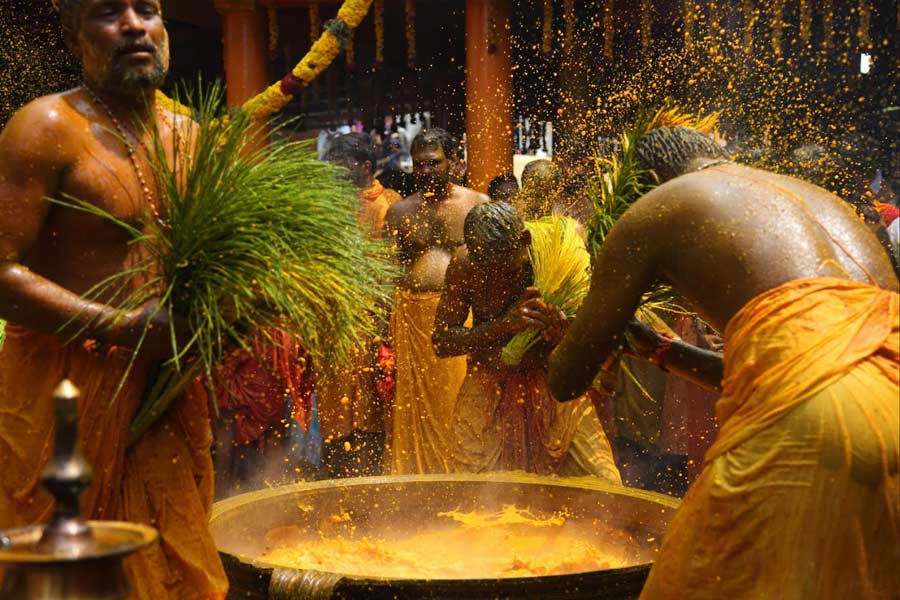
The turmeric bath ritual at a temple in Chengannur, Kerala iStock
Though Holi is not celebrated in all parts of south India, there are some parts where it is observed. In Kerala, Holi is called Manjal Kuli and is celebrated at the Gosripuram Thiruma’s Konkani Temple. It is celebrated mainly by the Saraswat Brahmins and Konkani farming communities. The festival begins in March at various temples of the region. Many say that the festival came here with the Kudumbis. An arecanut tree is cut and is transported to the shrine, which indicates the victory of Goddess Durga over the demons. In some other temples a crocodile is created using mud, which is believed to symbolise the Goddess who helped the community migrate to Kerala from Goa. On the succeeding day of the celebration, members of the Kudumbi community play with colours and water mixed with turmeric, and dance and sing.

